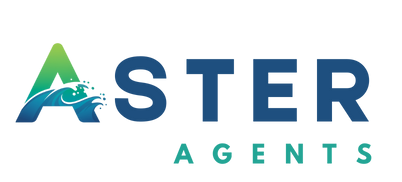Overview
Multi-agent workflows in Aster Agents allow you to create collaborative systems where specialized agents call each other to handle complex, multi-step tasks. Instead of building one agent that tries to do everything, you can create focused agents that excel at specific functions and coordinate their work automatically.How It Works
Agent Collaboration System
When you configure an agent to work with others, Aster Agents automatically:- Provides Agent Context: The calling agent receives information about available agents in its system prompt
- Maintains Conversation Threads: Agents can continue conversations across multiple interactions
- Preserves Context: Information flows seamlessly between agents in the workflow
- Handles Permissions: Only allows calls to explicitly configured agents
The Call Agent Tool
Multi-agent coordination is powered by thecall_agent tool, which enables agents to:
- Send messages to other specific agents
- Continue existing conversation threads
- Delegate specialized tasks
- Build complex workflows through agent collaboration
Setting Up Multi-Agent Workflows
1. Configure Agent Relationships
In the Control Hub when creating or editing an agent:- Enable the Call Agent Tool: Add
call_agentto your agent’s available tools - Select Callable Agents: Choose which other agents this agent can invoke from your organization’s agent list
- Automatic Integration: Agent details are automatically added to the system prompt
2. Agent Information Integration
When an agent has callable agents configured, they automatically receive:- Agent Names: Human-readable identifiers for each callable agent
- Agent IDs: Technical identifiers needed for the
call_agenttool - Agent Descriptions: Understanding of each agent’s capabilities and specializations
3. Design Your Workflow
Plan how agents will work together:- Define Roles: What specific task does each agent handle?
- Map Information Flow: What information needs to pass between agents?
- Plan Entry Points: Which agent do users interact with first?
- Consider Threading: When should agents continue existing conversations vs. start new ones?
Common Workflow Patterns
Sequential Processing
Agents work in a defined order, each building on the previous agent’s work. Example: Research to Report Pipeline- Research Agent → Gathers information from web and knowledge bases
- Analysis Agent → Processes findings and identifies key insights
- Writer Agent → Creates formatted report from analysis
- Review Agent → Quality checks and provides final output
Specialized Task Delegation
A primary agent delegates specific subtasks to specialized agents. Example: Customer Support Triage- Support Agent receives customer inquiry
- Based on issue type, calls:
- Technical Agent for product issues
- Billing Agent for payment questions
- Account Agent for user management
- Support Agent synthesizes response for customer
Parallel Processing with Coordination
Multiple agents work simultaneously, with results combined by a coordinator. Example: Market Research Workflow- Coordinator Agent breaks down research request
- Calls multiple agents in parallel:
- Web Research Agent → Industry trends
- Data Agent → Internal sales data
- Competitor Agent → Competitive analysis
- Coordinator Agent combines all findings into comprehensive report
Iterative Refinement
Agents work together through multiple rounds to refine outputs. Example: Content Creation Loop- Writer Agent creates initial draft
- Editor Agent provides feedback and suggestions
- Writer Agent revises based on feedback (using thread ID to continue conversation)
- Process repeats until quality standards are met
Practical Examples
Sales Intelligence Workflow
Content Production Pipeline
Data Analysis Workflow
Best Practices
Agent Design
- Single Purpose: Each agent should excel at one specific type of task
- Clear Descriptions: Write detailed agent descriptions since these appear in system prompts
- Consistent Interfaces: Design agents to work well together
- Error Handling: Consider what happens when agents can’t complete tasks
Workflow Planning
- Start Simple: Begin with 2-3 agents and expand gradually
- Map Dependencies: Understand which agents need outputs from others
- Plan for Failures: What happens if an agent in the chain fails?
- Test Thoroughly: Run complete workflows manually before deploying
Communication Design
- Clear Handoffs: Agents should know exactly what information to pass along
- Context Preservation: Use thread IDs to maintain conversation context when needed
- Status Updates: Keep users informed about multi-step progress
- Result Integration: Plan how final outputs get assembled and presented
Performance Considerations
- Parallel vs Sequential: Choose based on dependencies and urgency
- Thread Management: Use conversation threads strategically to maintain context
- Token Efficiency: Monitor cumulative token usage across agent calls
- User Experience: Balance thoroughness with response time
Managing Multi-Agent Systems
Configuration Management
- Agent Permissions: Carefully control which agents can call which others
- Role Clarity: Ensure each agent’s purpose is clearly defined and documented
- Version Control: Track changes to agent configurations and relationships
Monitoring and Optimization
- Workflow Performance: Monitor how long complete workflows take
- Agent Utilization: Track which agents are called most frequently
- Success Rates: Measure how often workflows complete successfully
- User Feedback: Collect input on workflow quality and usefulness
Troubleshooting Common Issues
- Context Loss: Information getting lost between agent handoffs
- Circular Calls: Agents calling each other in loops
- Permission Errors: Agents trying to call agents they don’t have access to
- Thread Management: Confusion about when to start new threads vs continue existing ones
Getting Started
Your First Multi-Agent Workflow
- Identify a Multi-Step Task: Choose something that naturally breaks into distinct phases
- Create Specialized Agents: Build 2-3 agents that handle different aspects
- Configure Relationships: Set up which agents can call which others
- Test the Flow: Run through the complete workflow manually
- Refine and Expand: Improve based on results and add complexity gradually
Simple Starter Workflows
- Research → Analysis → Report: Great for information gathering and synthesis
- Draft → Review → Revise: Perfect for content creation and quality control
- Collect → Process → Visualize: Ideal for data analysis tasks
- Triage → Specialize → Resolve: Excellent for customer support scenarios
Multi-agent workflows unlock the full potential of AI collaboration, allowing you to create sophisticated systems that handle complex tasks through intelligent coordination between specialized agents.
